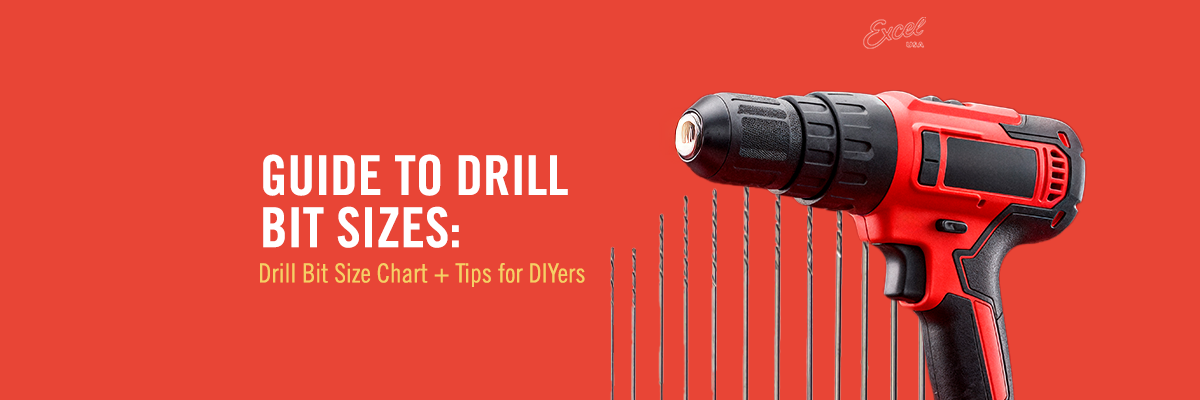
Drill Bit Sizes Guide for DIYers and Woodworkers
Drill Bit Sizes Guide for DIYers and Woodworkers
If you've ever stood in a hardware store staring at rows of drill bits labeled with fractions, letters, or numbers and thought, “What size drill bit should I use?” — you're not alone.
Drill bit sizes can be surprisingly complex, but mastering them is crucial for clean, safe, and accurate drilling. Whether you're a weekend woodworker, craft enthusiast using rotary tools, or a beginner machinist, this guide will break it all down.
Understanding Drill Bit Sizes: Why It Matters
Choosing the right drill bit size ensures:
- Screws grip securely
- You don’t crack or split the material
- You avoid stripped threads or oversized holes
- You drill with precision and safety
Using the wrong size can ruin your project. That’s why this guide will help you understand the four primary drill bit sizing systems and how to match them to screws, materials, and tools.

The Four Drill Bit Size Systems Explained
1. Fractional Inch Drill Bits
Measured in fractions of an inch (e.g., 1/8", 3/16", 1/2"), this is the most common system in the U.S.
Use cases:
- Woodworking
- Construction
- General repairs
Pro tip: Fractional sizes often appear on packaging and charts like:
- 1/16" for pilot holes
- 3/8" for bolts and anchors
- 1/2" for lag screws
2. Metric Drill Bits
Used internationally and increasingly in U.S. manufacturing, metric bits are measured in millimeters (e.g., 3mm, 5.5mm, 10mm).
Use cases:
- Metal fabrication
- Crafting with international kits
- Metric fasteners
Conversion tip: 10mm ≈ 3/8", 5mm ≈ 3/16"
3. Lettered Drill Bits (A–Z)
Letter bits range from A (smallest) to Z (largest) and fill the gaps between fractional sizes.
Use cases:
- Automotive parts
- Aerospace and high-precision jobs
- Drilling to exact tolerances
4. Numbered Drill Bits (#1–#80)
These range from #80 (tiny) to #1 (larger). Common in electronics, jewelry, and miniature work.
Use cases:
- Model building
- PCB drilling
- Mini screws and fine details
How to Choose the Right Drill Bit Size
Matching your drill bit to the job involves three key factors:
- The fastener type (screw, bolt, anchor)
- The material (wood, metal, plastic, masonry)
- The fit (tight or loose)
For Screws in Wood
- Choose a bit the same diameter as the screw shank (not including threads).
- For hardwoods, size up slightly to prevent splitting.
- For softwoods, size down slightly for grip.
For Metal
- Use HSS (high-speed steel) or cobalt bits
- Match bit to a threadless core of the screw or bolt
- Use cutting oil to reduce heat and friction
For Masonry
- Use carbide-tipped masonry bits
- Use with a hammer drill and the proper anchors
What Size Drill Bit to Use for a Screw?
|
Screw Size |
Pilot Hole (Softwood) |
Pilot Hole (Hardwood) |
|
#6 |
1/16" |
3/32" |
|
#8 |
3/32" |
7/64" |
|
#10 |
7/64" |
1/8" |
|
#12 |
1/8" |
9/64" |
Drill Bit Sizes Chart (Free Download)
Don’t memorize — print it! This chart includes fractional, metric, numbered, and lettered drill bit conversions.
Download the drill bit sizes chart and tape it to your workbench or pegboard.
Frequently Asked Questions
What are the standard drill bit sizes?
Standard sizes in the U.S. range from 1/64" to 1" in 1/64" increments for fractional bits. Metric sizes usually go from 0.5mm to 25mm, while numbered bits range from #80 to #1, and lettered bits from A to Z.
How do I know what size drill bit to use?
Match your drill bit to:
- The core of the screw, not the threads
- The size of the anchor, if using wall plugs
- The diameter of the hole needed for fitment or fasteners
When in doubt, drill a test hole in scrap material!
Is there a difference between metric and standard drill bits?
Yes. Metric bits are measured in millimeters, while standard (imperial) bits use inches or fractions. Metric sets often have more granular size options (e.g., 5.5mm), while fractional sets follow 1/64" steps.
What size drill bit is best for drywall anchors?
Check the packaging. Generally:
- For 3/16" plastic anchors, use a 3/16" bit
- For toggle bolts, use a bit equal to the folded toggle width
Use a masonry bit if going into concrete or brick.
Can I use the wrong drill bit size?
You can — but you shouldn’t. Using a drill bit that’s too large may result in loose screws. Too small, and the material may crack or split. Always use the correct bit size for a secure, clean hole. Consider purchasing an assorted drill bit set to determine the most suitable size for your specific needs.
Bonus Tips for Drill Bit Storage and Maintenance
- Keep bits dry: Store in a dry case or tool drawer with silica gel
- Label everything: Use drill index boxes or labeled strips
- Sharpen bits: Dull bits reduce accuracy and burn wood or metal
- Lubricate metal drills: Use cutting oil to keep bits cool and sharp
Mastering Drill Bit Sizes Makes You a Better Builder
Whether you're installing shelves, repairing furniture, or drilling precise holes for an art project, understanding drill bit sizes gives you an edge. With the right bit, you'll drill faster, cleaner, and safer.
Bookmark this guide, and tackle your next DIY project with confidence.
Shop Excel Blades' Premium Drill Bits and Pin Vises Collection.
You May Also Watch: How to Use a Small Adjustable Clamp